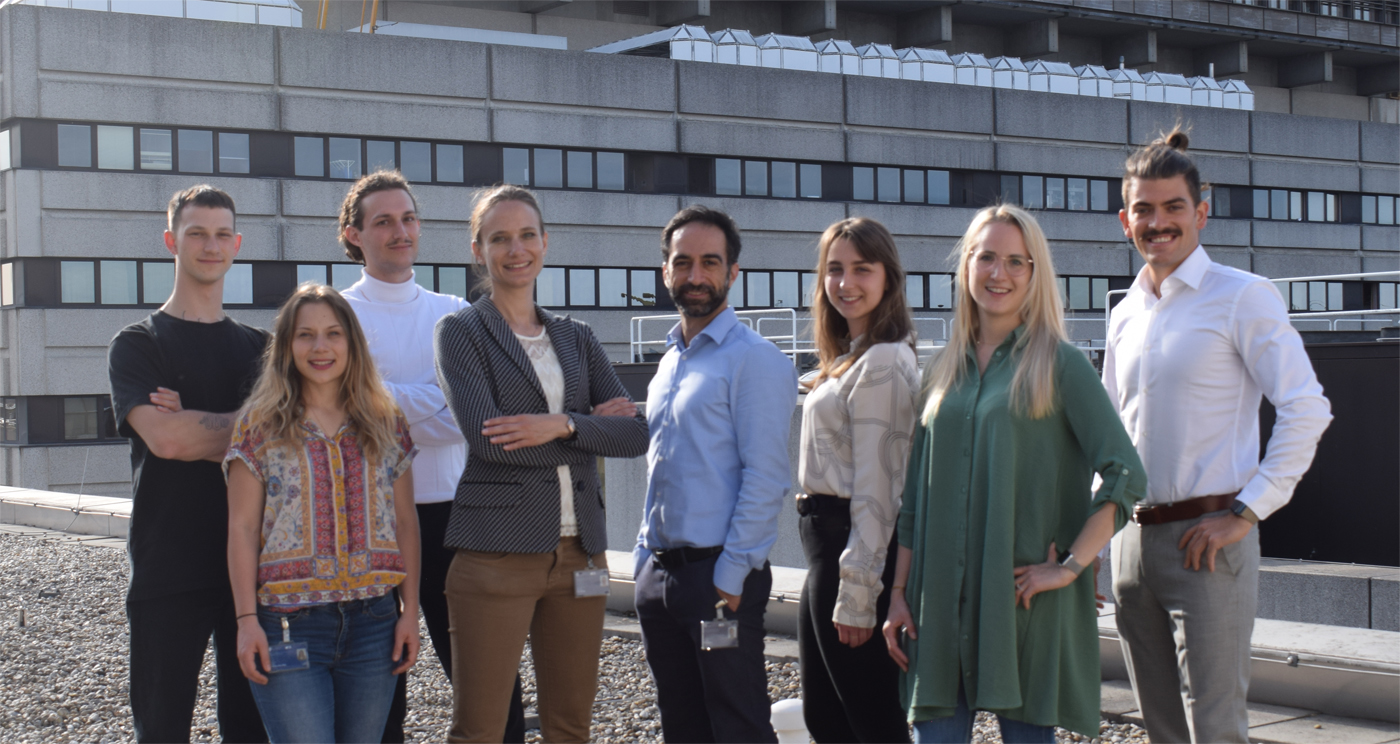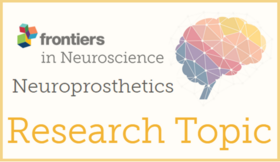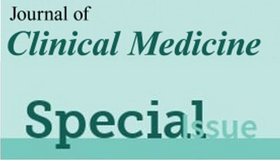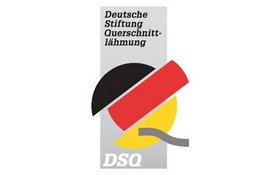Understanding neural control of movement and developing new therapeutic approaches
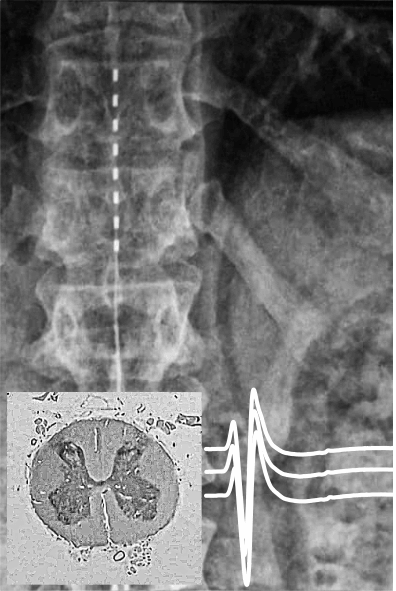
Our research focuses on deepening our current understanding of how movement is neurally controlled by the human spinal cord. At the basic science level, we are particularly interested in characterizing movement generators, known as locomotor circuits, in the human spinal cord - neuronal networks that have so far only been clearly identified in animals.
We use this knowledge to develop new rehabilitation strategies for people with movement disorders caused by diseases or injuries of the central nervous system (CNS). Our focus is on neuromodulatory approaches - methods that enhance the (residual) function of the CNS.
For our scientific and clinical work, we combine expertise from different disciplines - from neurotechnology and neuroanatomy to electrophysiology and computational neuroscience and beyond. We offer interested students from different disciplines the opportunity to participate in an ever-growing, dynamic and clinically relevant research field through internships and theses.
Our motivation: To improve motor function in people with CNS disorders or injuries and improve their quality of life.
Our contributions:
In the field of neuroscience:
- Neuroanatomical studies of receptor expression and specific neuronal cell types in the human spinal cord
- Characterization of spinal reflexes
- Characterization of locomotor circuits in the human spinal cord
- Establishment of a scientific framework of electrical spinal cord stimulation
- Studies of the interaction between electrical neuromodulation and spinal cord circuits
Development of new methods
- Pioneers in the development of transcutaneous spinal cord stimulation
- Pioneers in studies of epidural spinal cord stimulation in individuals with spinal cord injury
In clinical trials:
- Testing spinal cord stimulation in clinical trials with national and international partners in people with intact CNS and in people with movement disorders resulting from CNS injury and disease.
- First demonstration of the efficacy of transcutaneous spinal cord stimulation for spasticity control and enhancing residual motor function in people with spinal cord injury and multiple sclerosis.
Research Area
Principal Investigators
Ursula Hofstötter
P +43 (0)1 40400-19720
Karen Minassian
P +43 (0)1 40400-19720
- Anela Adilovic
- Aymeric Bayart
- Natalie Fehringer
- Selma Jakupovic
- Alexander Miller-Michlits
- Ivan Perret
- The catecholaminergic system of the human spinal cord and its alterations after spinal cord injury (2021)
FWF (Austrian Science Fund) - Carry-over Effects of Transcutaneous Spinal Cord Stimulation for Spasticity in Spinal Cord Injury: Underlying Mechanisms (2018)
FWF (Austrian Science Fund), Joint Project with SNF (Swiss National Science Foundation) - Nicht-invasive Rückenmarkstimulation zur Spastiklinderung und Mobilitätsförderung bei Multipler Sklerose: Pilotstudie (2017)
OeGNR (Österreichische Gesellschaft für Neurorehabilitation) - Intelligente Transkutane Rückenmarkstimulation (2017)
Bundesministerium für Wirtschaft und Energie (Deutschland)
Ausgewählte Publikationen
-
Minassian K, Bayart A, Lackner P, Binder H, Freundl B, Hofstoetter US. Rare phenomena of central rhythm and pattern generation in a case of complete spinal cord injury. Nat Commun. 2023 Jun 6;14(1):3276. PMID: 37280242.
-
Binder VE, Hofstoetter US, Rienmüller A, Száva Z, Krenn MJ, Minassian K, Danner SM. Influence of Spine Curvature on the Efficacy of Transcutaneous Lumbar Spinal Cord Stimulation. J Clin Med. 2021 Nov 26;10(23):5543. PMID: 34884249; PMCID: PMC8658162.
-
Rowald A, Komi S, Demesmaeker R, Baaklini E, Hernandez-Charpak SD, Paoles E, Montanaro H, Cassara A, Becce F, Lloyd B, Newton T, Ravier J, Kinany N, D'Ercole M, Paley A, Hankov N, Varescon C, McCracken L, Vat M, Caban M, Watrin A, Jacquet C, Bole-Feysot L, Harte C, Lorach H, Galvez A, Tschopp M, Herrmann N, Wacker M, Geernaert L, Fodor I, Radevich V, Van Den Keybus K, Eberle G, Pralong E, Roulet M, Ledoux JB, Fornari E, Mandija S, Mattera L, Martuzzi R, Nazarian B, Benkler S, Callegari S, Greiner N, Fuhrer B, Froeling M, Buse N, Denison T, Buschman R, Wende C, Ganty D, Bakker J, Delattre V, Lambert H, Minassian K, van den Berg CAT, Kavounoudias A, Micera S, Van De Ville D, Barraud Q, Kurt E, Kuster N, Neufeld E, Capogrosso M, Asboth L, Wagner FB, Bloch J, Courtine G. Activity-dependent spinal cord neuromodulation rapidly restores trunk and leg motor functions after complete paralysis. Nat Med. 2022 Feb;28(2):260-271. Epub 2022 Feb 7. PMID: 35132264.
- Hofstoetter, U.S., et al., 2021. Ipsi- and Contralateral Oligo- and Polysynaptic Reflexes in Humans Revealed by Low-Frequency Epidural Electrical Stimulation of the Lumbar Spinal Cord. Brain Sci, 11:112.
- Hofstoetter, U.S., et al., 2020. Spinal motor mapping by epidural stimulation of lumbosacral posterior roots in humans. iScience, 24:101930.
- Meyer, C., et al., 2020. Immediate Effects of Transcutaneous Spinal Cord Stimulation on Motor Function in Chronic, Sensorimotor Incomplete Spinal Cord Injury. J Clin Med, 9:3541.
- Hofstoetter, U.S., et al., 2020. Transcutaneous Spinal Cord Stimulation Induces Temporary Attenuation of Spasticity in Individuals with Spinal Cord Injury. J Neurotrauma, 37(3):481-493.
- Hofstoetter, U.S., et al., 2019. Recovery cycles of posterior root-muscle reflexes evoked by transcutaneous spinal cord stimulation and of the H reflex in individuals with intact and injured spinal cord. PLoS One, 14(12):e0227057.
- Hofstoetter, U.S., et al., 2018. Common neural structures activated by epidural and transcutaneous lumbar spinal cord stimulation: Elicitation of posterior root-muscle reflexes. PLoS One, 13(1):e0192013.
- Minassian, K., et al., 2017. The Human Central Pattern Generator for Locomotion: Does It Exist and Contribute to Walking? Neuroscientist, 23(6):649-663.
- Hofstoetter, U.S., et al., 2017. Probing the Human Spinal Locomotor Circuits by Phasic Step-Induced Feedback and by Tonic Electrical and Pharmacological Neuromodulation. Curr Pharm Des. 2017, 23(12):1805-1820.
- Minassian, K., et al., 2016. Targeting Lumbar Spinal Neural Circuitry by Epidural Stimulation to Restore Motor Function After Spinal Cord Injury. Neurotherapeutics, 13(2):284-94.
- Hofstoetter, U.S., et al., 2015. Augmentation of Voluntary Locomotor Activity by Transcutaneous Spinal Cord Stimulation in Motor-Incomplete Spinal Cord-Injured Individuals. Artif Organs, 39(10):E176-86.
- Minassian, K., et al., 2016. Spinal Rhythm Generation by Step-Induced Feedback and Transcutaneous Posterior Root Stimulation in Complete Spinal Cord-Injured Individuals. Neurorehabil Neural Repair, 30(3):233-43.
- Hofstoetter, U.S., et al., 2015. Periodic modulation of repetitively elicited monosynaptic reflexes of the human lumbosacral spinal cord. J Neurophysiol, 114(1): 400-10.
- Danner, S.M., et al., 2015. Human spinal locomotor control is based on flexibly organized burst generators. Brain, 138(Pt 3):577-88.
Ursula Hofstoetter
-
is Associate editor, Frontiers in Neurology, section Neurorehabilitation
-
is member of the editorial board, Applied Sciences, section Applied Neuroscience and Neural Engineering

